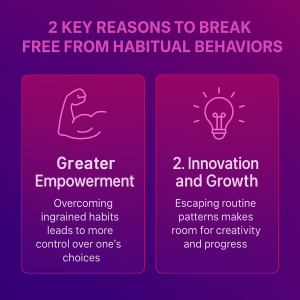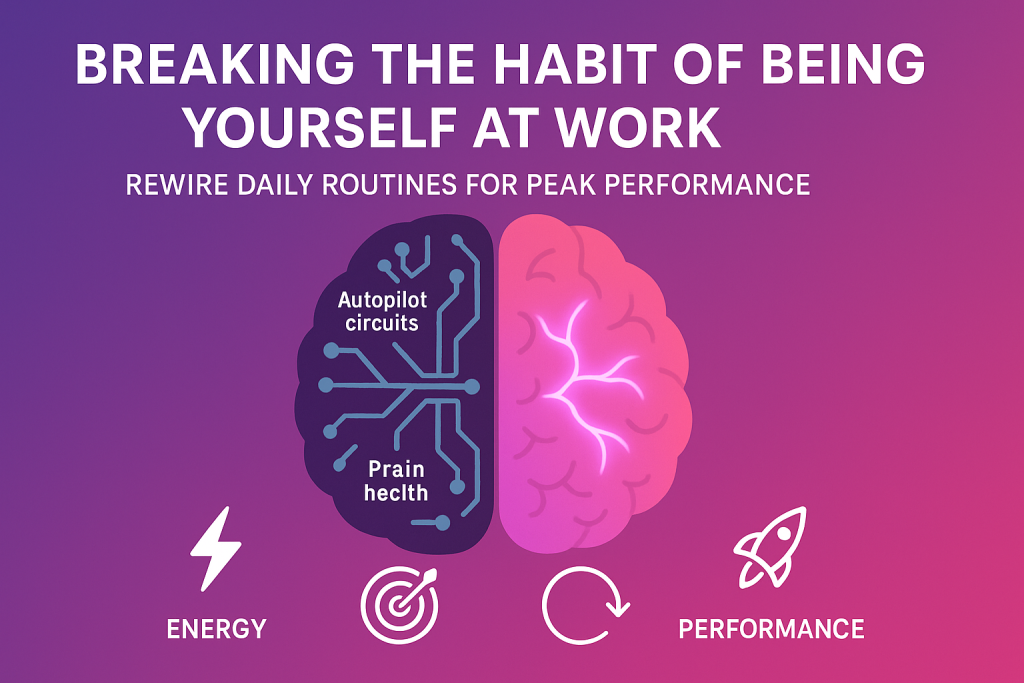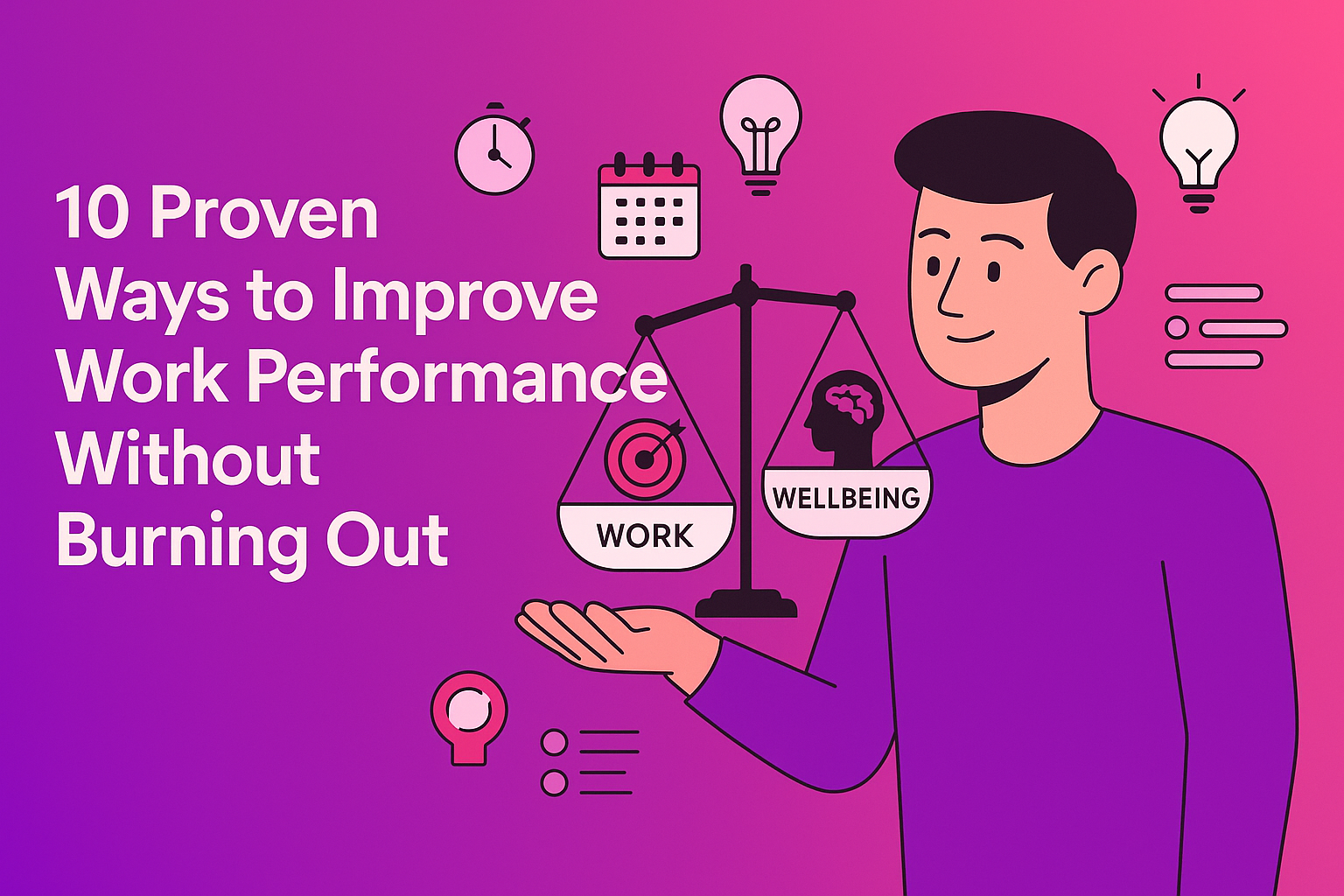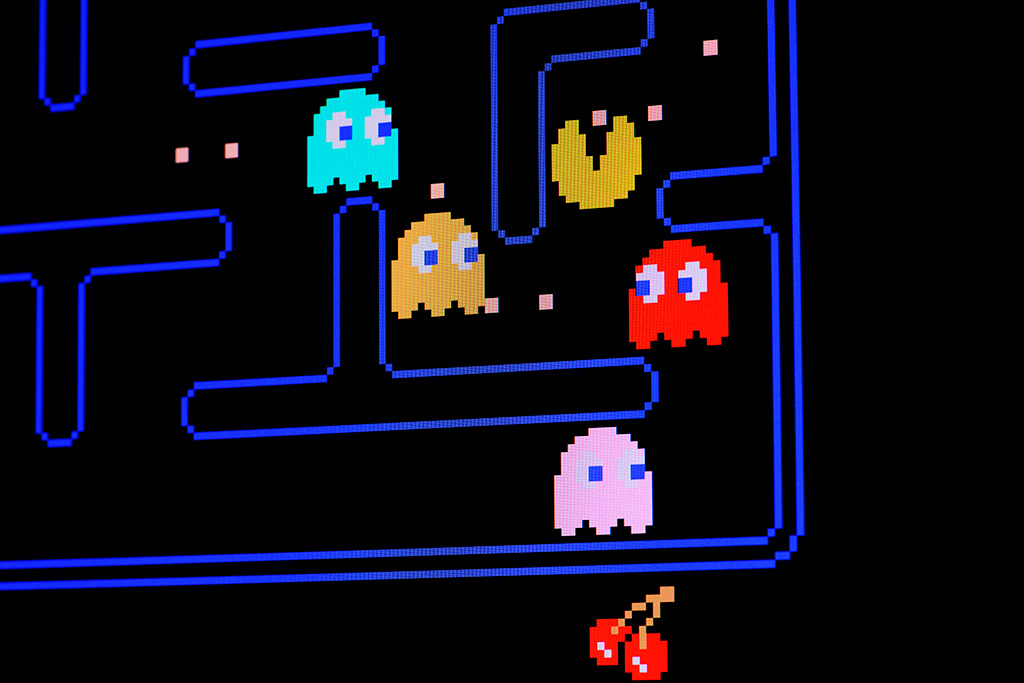Most of us show up to work and run on autopilot.
You check your email first thing in the morning. You bounce between Slack pings and half-finished tasks. By the end of the day, you’re exhausted but not exactly sure what you actually achieved.
Sound familiar? That’s the hidden trap: we’re stuck repeating the same patterns, day after day, expecting different results.
Here’s the thing: working harder isn’t always the answer. Sometimes, the real game-changer is breaking the habit of being yourself.
What does that mean? It’s about stepping out of the old, default version of you, the one who runs on routine without thinking, and rewiring your daily work habits so you can hit peak performance without burning out.
Think of it like upgrading your internal “work software.” Instead of forcing yourself to grind harder, you reprogram your daily actions, energy, and focus so they work for you, not against you.
And here’s the good news: you don’t have to do it alone.
With Gwork, we believe peak performance doesn’t come from endless hustle, it starts with small, intentional shifts in mindset and daily practice. When teams and individuals align their habits with how humans actually work best, productivity, well-being, and creativity skyrocket.
So, in this guide, we’ll explore:
- What breaking the habit of being yourself really means in a workplace context.
- Why old patterns hold you back from growth.
- The science of how your brain builds habits (and how to rewire them).
- Practical, beginner-friendly strategies to build new routines that boost performance and prevent burnout.
- Real ways Gwork helps organizations turn small changes into long-term wins.
If you’re tired of feeling stuck in the same cycle of busyness and ready to work smarter, not harder, this one’s for you.
Why “Breaking the Habit of Being Yourself” Matters in the Workplace
The Invisible Patterns That Hold Us Back
Most professionals think their performance struggles come from external factors — deadlines, meetings, or workload.
In reality, the biggest limitation is often our own patterns of thinking and behaving.
Repeating the same habits daily (checking emails first thing, skipping breaks, multitasking) locks us into autopilot mode.
This is exactly where breaking the habit of being yourself becomes powerful: it’s about stepping out of auto-responses and designing intentional behaviors.
With using Gwork, we help teams notice these invisible patterns and replace them with high-performance rituals that feel natural, not forced.
Neuroscience of Habits at Work
Habits are essentially shortcuts the brain builds to save energy. While efficient, they can keep us stuck in old, unproductive ways.
Research in neuroplasticity shows that the brain can rewire itself — meaning you can literally train your mind to think, focus, and recover differently.
This is why breaking the habit of being yourself isn’t about rejecting who you are; it’s about upgrading your mental “operating system.”
Emotional Energy vs. Time Management
Traditional productivity advice says, “manage your time better.”
But modern science shows energy management is more critical than time management.
If you wake up tired, no time-blocking system will save your day.
Breaking the habit of being yourself in this sense means learning to manage emotional energy, not just your calendar.
Example: Instead of powering through fatigue, build a recovery ritual into your day.
Gwork’s performance framework emphasizes protecting energy and recovery as much as deadlines, so professionals can thrive without burning out.
The Leadership Dimension
Leaders play a huge role in reinforcing workplace habits.
If managers glorify late nights, skipping vacations, or “always being on,” employees mirror these behaviors.
Breaking the habit of being yourself at a leadership level sets a tone for healthier, more productive teams.
Do you know? Gwork partners with leaders to shift culture from hustle-driven to performance-driven, where healthier routines become the default.
But culture and leadership are only part of the story at the core. It’s our own brain wiring that shapes how we work every day. To truly break the habit of being yourself, we need to understand the science behind why habits stick and how they can be rewired.
The Science Behind Work Habits and Performance
How Brain Wiring Influences Daily Behavior
Every time you repeat a task — whether it’s checking Slack first thing in the morning or grabbing a coffee before a meeting — your brain builds a shortcut pathway to make it automatic.
This is efficient because your brain saves energy, but it also means that if the habit isn’t serving you, it’s hard to break free.
That’s why many professionals feel “stuck” even when they want to work smarter.
The truth? You’re not lazy or unmotivated — your brain is just running the same script over and over again.
This is where breaking the habit of being yourself comes in. It’s about noticing those scripts and consciously rewriting them.
The Role of Neuroplasticity in Creating New Routines
The good news: our brains are wired for change. Thanks to neuroplasticity, you can literally rewire your brain for success by practicing new behaviors until they stick.
Think of it like carving a new trail in the woods — the more you walk it, the clearer and easier it becomes.
At work, this means you can shift from old patterns like multitasking or skipping breaks into healthier ones like focus sprints and mindful pauses.
Over time, your new “default” becomes more productive and less draining.
Why Repeating Old Work Habits Stalls Growth and Creativity
When you run on autopilot, you might get things done — but you’ll rarely reach your best performance.
Repeating old patterns limits:
- Focus → constant context-switching weakens deep work.
- Energy → no breaks = faster burnout.
- Creativity → same input, same output.
This is why breaking the habit of being yourself at work is so important. Growth only happens when you challenge the routines holding you back.
With Gwork, employees and teams don’t have to overhaul their entire routine overnight. Instead, they can weave simple micro-habits directly into the tools they already use every day, like Slack, Outlook, or their calendar. Over time, these tiny, low-effort shifts add up to meaningful, lasting improvements in focus, collaboration, and overall performance.
Now that we understand why habits shape our performance, the next step is to understand how to consciously break free from the patterns that hold us back at work.
Breaking the Habit of Being Yourself at Work
We’ve seen how your brain wiring shapes your daily behaviors. But now comes the practical part, spotting where those patterns show up at work and learning how to shift them. This is the step where breaking the habit of being yourself turns from an idea into action.
Identifying Autopilot Behaviors in Daily Routines
Most professionals don’t even realize how much of their day runs on autopilot. Here are three of the biggest “silent performance killers”:
Checking email first thing in the morning It feels productive, but it instantly puts you in a reactive mode instead of starting your day with clarity and focus.
Multitasking instead of deep work Jumping between Slack, email, and projects may feel efficient, but research shows it reduces output quality and increases stress.
Skipping breaks or meals Many employees push through the day without recovery time, which drains energy and leads to mistakes later.
The first step in breaking the habit of being yourself at work is simply noticing these patterns. Once you see them, you can start replacing them.

Why These Patterns Limit Peak Performance
These habits might look small, but they add up to serious roadblocks:
- Reduced focus: Constantly reacting instead of proactively creating.
- Energy drains: Overworking without breaks lowers your long-term stamina.
- Lower engagement: When everyone’s stuck in reactive mode, collaboration suffers.
And here’s the kicker: they don’t just affect you — they influence the entire workplace culture. If a team normalizes “always-on” multitasking, creativity and innovation drop across the board.
This is why shifting habits matters at both the individual and organizational level.
How to Rewire Daily Work Routines for Peak Performance
Now that you can spot your autopilot behaviors, the next step in breaking the habit of being yourself at work is to rewire them. The good news? You don’t need a massive overhaul. Real change happens through small, consistent shifts that stack up over time.
Start with Awareness and Reflection
You can’t rewire what you don’t notice. That’s why awareness is the foundation.
Journaling or time tracking: Write down where your time goes each day. You’ll be surprised how much disappears into emails or “quick check-ins.”
Recognizing emotional triggers: Pay attention to what sets you off — maybe stress eating, overchecking Slack, or avoiding tough tasks. Triggers show you where habits need to shift.
Think of this stage as holding up a mirror. Once you see the patterns, you can design smarter replacements.
Replace Old Habits with High-Performance Micro-Habits
Big changes fail because they feel overwhelming. Instead, swap old routines with tiny, high-performance habits that are easy to repeat.
Instead of checking email first thing → Spend 20 minutes on your most important project. This small win sets the tone for the entire day.
Instead of pushing through without breaks → Take 5-minute reset breaks to stretch, breathe, or grab water. You’ll come back sharper and calmer.
These micro-habits work because they’re realistic. They don’t fight your brain — they gently guide it in a better direction.
Protect Recovery Like a Deadline
Here’s a truth most workplaces ignore: recovery isn’t “extra,” it’s the fuel for performance. Without it, even the best habits fall flat.
- Sleep improves memory, focus, and creativity.
- Nutrition keeps your energy steady, avoiding the 3 p.m. crash.
- Mental downtime (like hobbies, short walks, or even just sitting quietly) resets your brain so you don’t burn out.
At Gwork, we often say: If you don’t schedule your recovery, your performance will schedule your breakdown.
Gwork helps teams design wellness-first cultures where recovery is non-negotiable — because sustainable productivity depends on it.
The Role of Workplace Culture in Breaking the Habit of Being Yourself
Here’s the truth: no matter how motivated or disciplined you are, changing habits at work is tough when the culture around you doesn’t support it. Think about it — you might want to take short breaks, focus deeply, or cut back on late-night emails. But if your workplace glorifies “always on” hustle, you’ll feel guilty for stepping away or slowing down.
That’s why workplace culture is the hidden engine behind sustainable habit change. You can’t always fight the environment on your own. In fact, studies in employee engagement show that workers are far more likely to adopt healthier routines when leaders and teams normalize those behaviors.
So, let’s break it down:
Why individuals can’t always change habits alone
Habits are contagious. If your team is constantly multitasking, jumping between Slack pings and meetings, it’s hard to be the one person practicing focus.
Social pressure matters. Employees often mirror what leaders do. If the boss answers emails at midnight, others will feel they need to do the same.
The environment reinforces patterns. Open offices, endless notifications, and “urgent” tasks create cues that pull people back into old behaviors.
Bottom line: it’s not about willpower. It’s about alignment between personal intentions and cultural norms.
How leaders can encourage healthier routines
This is where leadership comes in. Great leaders don’t just set KPIs; they model the work habits that drive peak team performance without burning people out. Some examples:
Flexible work options → Give employees autonomy to structure their day around peak energy times, whether that’s early mornings or late afternoons.
Focus hours → Create company-wide blocks where meetings and Slack are paused, so everyone can get deep work done.
Digital well-being policies → From “no emails after 7 PM” to encouraging calendar breaks, these small boundaries send a big signal that rest is part of performance.
When leaders create space for healthier routines, employees feel both permission and encouragement to adopt new habits. And that’s where culture starts to shift from busyness to true productivity.
Practical Habit Shift Examples for Professionals
Now, let’s get even more practical. If breaking the habit of being yourself sounds like a big idea, here’s how it looks in simple, everyday workplace actions. These are small shifts that don’t require a life overhaul, but they can completely change the way your day feels.
Mindset Shifts for High-Performance Days
Reframe failure as feedback Instead of beating yourself up when a task doesn’t go as planned, ask: What did this teach me? This one change removes the fear of mistakes and turns every setback into a growth opportunity.
Practice gratitude at work Start or end your day by writing down 2–3 things you’re grateful for. It could be a supportive coworker, a project you enjoy, or simply finishing your tasks on time. Gratitude shifts your mind from pressure to possibility.
Energy and Focus Hacks
Movement breaks Sitting all day drains energy fast. A 3-minute stretch, a quick walk to refill your water bottle, or even standing during calls can reset your brain. Movement keeps energy flowing and focus sharp.
Brain-food snacks Swap chips or sugar-loaded snacks for nuts, fruit, or dark chocolate. It’s not about dieting—it’s about fueling your brain so you don’t crash in the middle of the afternoon.
Digital Detox Strategies
Slack/email boundaries Checking notifications every minute kills deep focus. Instead, try batch-checking emails or Slack 2–3 times a day. Most “urgent” pings can wait, and this keeps you in control of your attention.
Tech-free wind-down routines Scrolling before bed keeps your mind wired. Replace it with 10 minutes of journaling, light reading, or meditation. Your sleep improves, and so does your performance the next day.
Breaking the Habit of Being Yourself Isn’t About Changing Who You Are
When people first hear the phrase breaking the habit of being yourself, it can sound scary—almost like you need to erase who you are and become someone completely different. But that’s not the truth.
The real idea is much simpler: you’re not “changing yourself” in a way that loses your identity. Instead, you’re unlocking a better version of yourself at work—one that’s less stressed, more focused, and capable of showing up with energy every day.
Think of it like upgrading your phone. You’re still using the same device, but now it runs smoother, faster, and has new tools to help you. Breaking the habit of being yourself works the same way—it’s about updating your patterns so you can perform better without burning out.
Sustainable change vs. quick fixes
Many professionals fall into the trap of chasing quick fixes:
- A productivity app here.
- A motivational video there.
- Maybe even an all-nighter to “catch up.”
But these don’t stick. Quick fixes feel good for a day or two, but then old habits creep back in. The only way to create lasting progress is through small, sustainable shifts in your daily routine.
That’s where the real magic happens. When you rewire one tiny habit—like starting your day with five minutes of planning instead of jumping straight into emails—you create a ripple effect. Over time, those ripples stack up into major transformation.
And here’s the good news: you don’t have to do it all alone.
At Gwork, we empower employees to grow without burning out.
Our approach is built around creating workplaces that support both performance and well-being, so you can keep building a better version of yourself without losing who you are.
Conclusion: Small Shifts, Lasting Impact
When you think about breaking the habit of being yourself, it might sound like a huge life makeover. But here’s the truth: it’s not about turning into someone else overnight. It’s about making small, simple shifts in the way you work and show up every day.
One small habit like choosing to start your morning without checking emails, or taking a mindful pause before jumping into back-to-back meetings—can have a ripple effect. Over time, those tiny changes add up. They rewire how you think, act, and perform at work. And suddenly, you realize you’re not just working harder—you’re working smarter, with more focus and energy.
That’s what breaking the habit of being yourself is really about. It’s not about losing who you are—it’s about unlocking the better version that’s already inside you.
At Gwork, we believe that long-term success doesn’t come from quick fixes or hustle culture. It comes from creating sustainable habits that support both performance and well-being. Because when you feel good, you do good.
Start small today. Pick just one work habit you want to shift—a morning routine, how you manage meetings, or even how you end your workday. Stick with it, and watch how it transforms not just your work, but your entire mindset.
Ready to transform your workplace habits?
Explore our content recommendation engine to discover personalized strategies that fit your team’s unique needs, or view our case studies to see how other organizations have successfully implemented lasting habit changes.
Want to get started immediately?
Book a demo to see how Gwork can help you and your team reimagine work habits that fuel growth, resilience, and long-term success, complete with action plans and follow-up support to ensure your new habits stick.









